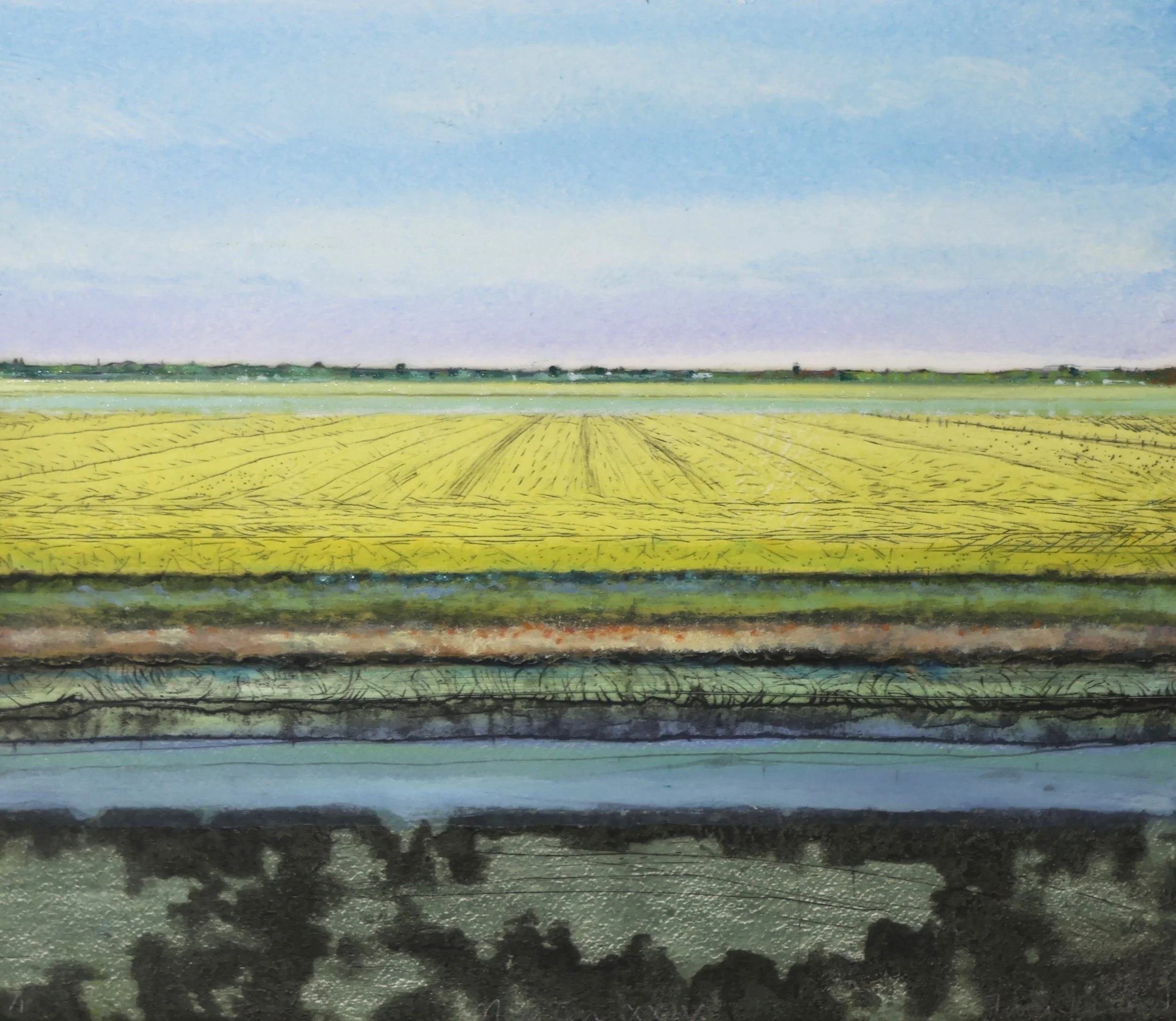Iona Howard
Based in Cambridgeshire
My prints use figuration and abstraction to portray the landscape of places I know well. The sources can come from working en plein air or expressing landscape filtered through memory. The physicality of my approach to the printing process combined with a contemplative exploration of surface makes the subject spontaneous and vibrant whilst capturing an intimate connection with the landscape.
I am captivated by the ancient semi-natural landscapes typical of my native west Cornwall where a blurred line exists between nature and human activity; the field boundaries of West Penwith are some of the world’s oldest artifacts still in use. My father, John Carlyon, was a sculptor who worked in Cornish serpentine, a rock unique to the Lizard peninsula and these innate connections with the landscape continue to inform my work.
I have lived on the Fen Edge near Cambridge for the last twenty years and the focus of my work is the meeting point of land, horizon and sky, their flatness altering the perception of distance. My prints have gradually evolved from monochromatic studies by introducing colour to reflect the Fens’ ever-changing mood and light.
My monochromatic work has developed in parallel to this as a result of my three-year collaboration with the 2017 Fenland Poet Laureate, Kate Caoimhe Arthur. Our work explores the concept of the sublime, the senses of home and alienation in a humanly fabricated natural space, and the precarious relationship between the ecological and the human. This began, as Kate reflects in her recent essay, ‘Walking the Same Cut’ for the commemorative poetry anthology Hold Open the Door, as “an artistic collaboration neither of us can describe yet.” From these early walks in the spring of 2017, our collaboration has since taken a variety of forms: staging talks and exhibitions, sound recording and creating numerous prints and poems.
I predominantly use carborundum in my printing process, a technique where a mix of a binder and carborundum grit is applied onto the surface of a plate and inked up. It provides highly embossed, velvety textures and rich, dense tones. To contrast the carborundum, drypoint is added to produce an incised line, which is characteristically thin, linear and precise. Colour is introduced by layering carborundum plates or more often realised though monoprint. I print to the edge of the paper to leave the composition as unconstrained as the landscapes from which I seek inspiration.
Go to our Printmaking Techniques page for more information on how these prints are created
Don’t hesitate to email us on info@cambridgegallery.co.uk or call us on 01223 324222 if you have any questions about specific pieces.




















